WEEVIL ALERT:
The agave snout-nosed weevil is a major pest in ever-increasing numbers. Don't wait for signs of infestation; take preventative measures NOW to protect your agaves, furcraeas, yuccas, beaucarneas and mangaves. Please don't let your yard become a breeding ground for pests that move on to your neighbors'!
ON THIS PAGE you'll find photos of common succulent pests, diseases and problems; and discover causes, severity, prevention and treatments.
VIDEOS: On my YouTube Channel, view my Pests and Diseases playlist (eight videos) and Oh, No! Something's Wrong with My Succulent! (12:19).
NOT SEEING WHAT YOU NEED? Describe your plant's problem in a comment on the Pest and Diseases Forum.

Abrasion and leaf scarring
- Not Serious but unsightly.
- Most succulents eventually outgrow it.
Aeoniums (at left) are especially prone to brown marks from being handled. Lines and blotches show up a day after something or someone has touched the leaves. If you're making a bouquet of aeoniums or taking cuttings, hold them by their stems only, and don't let them brush against anything.
See my video: Aeonium Leaves, What You Need to Know (1:23).

Abrasion on Agave americana (century plant) from being moved. Will eventually outgrow it.

Agave 'Blue Flame' is susceptible to scarring on inner leaves. It's typical of the cultivar and unfixable.
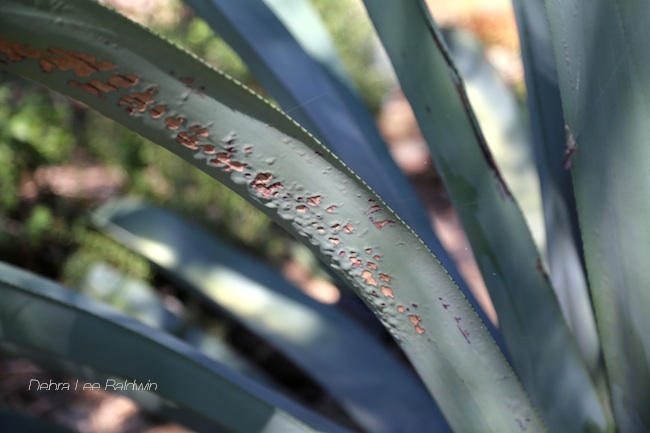

Agave edema
- Not serious but unsightly.
- Plants may eventually outgrow it.
Blotchy patches appear on leaves and the top layer sloughs away. Unlike sunburn, the damaged area is lower than the surrounding leaf surface. Unlike frost, which typically "burns" leaf tips, edema shows on the wider part of the leaves.
 Edema can happen when agaves that are used to a cool, mild climate like the Bay Area's go through an intense heat spell.
Edema can happen when agaves that are used to a cool, mild climate like the Bay Area's go through an intense heat spell.
Inconsistent watering also can cause edema. Blistering on one of my agaves happened after a pipe broke beneath it. If there's a way to anticipate or prevent the damage, I'm unaware of it.
Agave Grease Mite
- Serious and unsightly
Dark, greasy blotches on agaves result from an eriophyid mite infestation, which can spread to other agaves. It's best to remove and destroy the plants, but if this isn't possible, experts recommend drenching affected agaves (and those nearby) monthly, during the spring-fall growth season, with miticides, alternating two or three brands. Those that are earth-friendly include Neem Oil and GrowSafe. Continue treatment until new leaves show no sign of disease---which may take up to a year.

Agave Snout Weevil
- Serious, potentially fatal
- Prevention is essential: Drench the ground beneath agaves in your garden in spring and fall with systemic insecticide.
- When potting agaves, add insecticide granules to the soil per label directions.
 If your agave wilts and has dark patches at leaf axils, it likely has snout weevil, a thumbnail-sized black beetle that punctures an agave's core and inserts eggs. Grubs hatch, consume the core of the plant, turn it to mush, then tunnel into the ground to pupate.
If your agave wilts and has dark patches at leaf axils, it likely has snout weevil, a thumbnail-sized black beetle that punctures an agave's core and inserts eggs. Grubs hatch, consume the core of the plant, turn it to mush, then tunnel into the ground to pupate.

Aloe Mite
- Serious because it spreads
- Disfigures the plants
A microscopic mite causes bubbly, tumorlike growth on aloes, especially along leaf margins and flower spikes, and where leaves meet the stem. Once in a plant’s tissues, the mite continues to cause cancerous growth. Discard the aloe unless it's important to you to keep it, in which case, cut out any affected tissue and bag it for the trash. Sterilize the tools you use with bleach or isopropyl alcohol. Aloe mite will still show up on that particular plant, so even if it looks fine, don't give away cuttings.
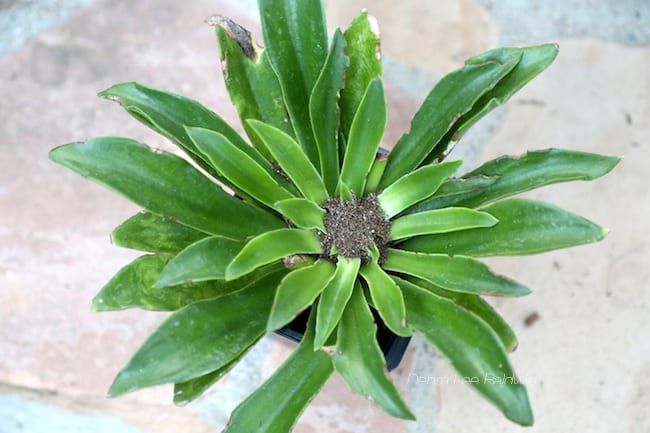
Ant infestation
- Serious
- Plants recover if caught in time.
Ants nest in the soil beneath aloes, haworthias and gasterias in late summer and fall, and feed on the plant's core, which fills with dirt that the pests push up from below. Peel away damaged leaves until you have a clean, unblemished core, and wash the roots. Replant in fresh soil where ants can’t access it. Alternatively, if it's in a pot, set in water with insecticide added to kill the pests, then keep pot surrounded by a moat of water.
Diatomaceous earth is a "green" alternative to powders containing pyrethrum. It scratches and penetrates insect exoskeletons, dehydrating them.

Aphids and Thrips
- Usually not serious
- May cause distorted growth
Juicy, pinhead insects latch onto and suck the juices of tender new leaves, flower stems, and buds. Ants place aphids on plants in order to consume the bugs' sweet, sticky secretions. Blast pests with a strong spray of water, release ladybugs and other beneficial insects, remove severely infested stems and buds, spray remaining aphids with Isopropyl alcohol, and take measures to prevent ants from accessing the plant.
When potting flowering succulents like the cotyledon shown here, add insecticidal granules to the soil per label directions.


Black Spots
- Not serious but unsightly
- No known cure
Not much is known about this, but it's likely a fungus. It affects aloes, haworthias and gasterias. It spreads, especially in coastal areas, perhaps due to moist air. Keep leaves dry, locate plants where there's good air circulation, and remove affected leaves, sterilizing tools after each cut.
Btw, Jeff Moore of Solana Succulents prefers Aloe tongaensis over A. bainesii: "less issues and better flowers, if not as big."
Bud rot
- Serious, if flowers are important
- No known cure
Bud rot, which likely originated in China or Korea, may affect aloes during rainy weather. It doesn't seem to harm the plant, but it prevents flowering. That's a shame, because aloe blooms are spectacular, especially those of larger specimens.
For hybridizers who anticipate harvesting pollen for crossbreeding aloes, bud rot can be devastating.
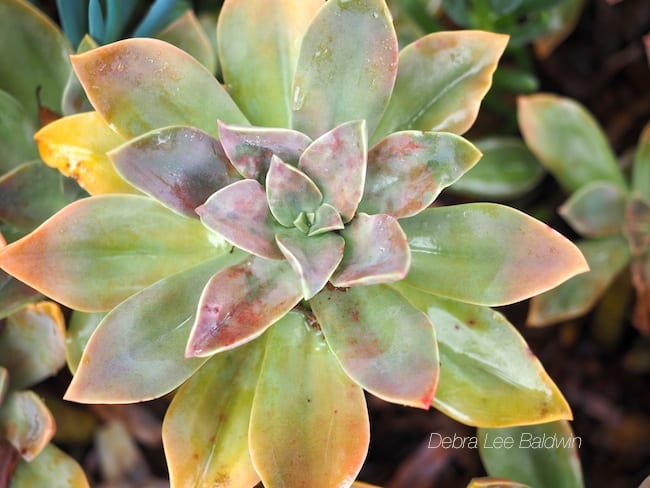
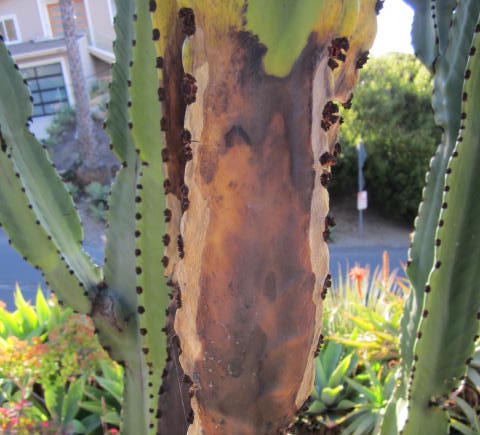
Blotchy leaves
- Normal
Leaves of rosette succulents such as graptopetalums, graptoverias, aloes and echeverias change color according to light conditions (the more light, the more rosy the leaves). When transitioning from green to red (or vice-versa), leaves may appear blotchy.
Brown patches (Corking)
- Unsightly, rarely fatal
This often affects columnar euphorbias in coastal areas, so I consulted expert Jeff Moore of Solana Succulents in Solana Beach, CA. He says, "It has to be environmental as opposed to bugs. As benign and plant-friendly as coastal CA is, it's not exactly like where the plants evolved. I've always thought that hot fall or spring days, where an intense sun comes in more diagonal that a plant would evolve in at a lower latitude, can cause the skin to burn. That's a best guess, maybe exacerbated by being under-hydrated in combo with intense sun. One thing I know for sure is that the burns/marks won't go away."
San Diego Horticultural Society past president Jim Bishop offers an aesthetic answer: He paints the brown areas to make them disappear.

Cochineal scale
- Unsightly; serious if uncontrolled
Cochineal scale forms dots of white fluff on paddle cacti and will dye your fingertips red if you mash it. Blast the plant with a hose to dislodge the pests, scrub infested pads with a Safer soap solution in summer (using a soft bristled, long-handle brush). Spray with Neem oil in winter, and release beneficial predatory insects (ladybugs) in spring. Poor air circulation, heat, and humidity make cochineal scale worse. It's difficult to get rid of if not caught early. If the infestation is severe, pads or entire plants may need to be removed. Scroll down for common scale.
Watch my YouTube video (2:01).


Color change (reversion to green)
- Normal if plant is otherwise healthy
Certain succulents---notably crassulas (jades) and aloes---blush red or orange when environmentally stressed, that is, given more sun and less rich soil and water than ideal for optimal growth. Nurseries are pros at producing colorful, healthy succulents which sell better than plain green ones. When you bring a red, orange, yellow or purple succulent home, give it the same amount of sun as at the nursery to hold the color. However, solid green succulents do tend to be more vigorous. To stress a green succulent, increase exposure gradually for a week or so, lest it sunburn.
Crackled, scabby patches
- Serious
This indicates mycoplasma infection. The bacteria enters the plant's roots and then its leaves from soil that contains horse manure. Your source nursery needs to know they're selling diseased plants (ask for a refund). Once in a plant's tissues, the only treatment is Agri-mycin, a pricey horticultural antibiotic. My recommendation is to bag the plant and put it in the trash, soil and all. Clean the pot thoroughly before reusing. Learn more in the Disease section of my video: Dick Wright on How to Grow Echeverias. Fast forward to 6:06.

Dead lower leaves
- Normal, if center growth is healthy
New leaves form at the center of a succulent's rosette or from the tip of its stem. Older lower leaves wither and die, and may persist on the stem, thereby shading it from harsh sun and insulating it from cold.
Certain succulents, notably dudleyas, close their rosettes during their summer dormancy to protect their vital cores, so all you see are dead leaves. It’s generally better for the plant if you leave them on, because they do have a purpose, but if you find them unsightly, it's OK to peel them away. Also, they may harbor pests such as mealy bugs.

Deer
- Serious
Large bites taken out of leaves as well as uprooted plants are indicative of deer. At first sign of damage, apply a deer repellent. If the situation becomes intolerable, the only recourse may be to plant deer-resistent plants or surround your garden with 7-foot fencing.


Desiccation
- Normal
- May be fatal if unremedied
When formerly plump leaves become wrinkled and lose their sheen, it's a sign that they're drying out. During times of drought in their native habitats, succulents live off the moisture in their leaves. Therefore, they can survive a lack of water that would kill other plants. So long as a succulent's vital core is healthy and hasn't been compromised by pests that prey on weakened plants, it will likely recover when watered or the rains return.
Dying after flowering
- Normal for certain kinds of succulents, mainly agaves
Succulents that are "monocarpic" die after they bloom. Aeoniums, sempervivums, and agaves are best-known for being monocarpic, but some (like A. americana) take 15+ years to flower---hence the name "century plant." Less common monocarpic succulents include furcraeas and orostachys. Paddle plants (Kalanchoe luciae) do bloom themselves nearly to death, but unlike true monocarps, those plants can be saved if you cut the flower stalk as it forms.
Read my post "Big Blue's Life and Demise" about my own Agave americana and see its removal on my YouTube channel: “Agave americana Bloom and Removal” (4:44).
Also on my channel:“What You MUST know about Century Plants” (2:50).

Etiolation (elongated stems)
- Not serious
Succulents tend to grow in the direction of greatest sun exposure. Leaves and stems that appear stretched or leaning are "etiolated," a term that means growth that results from inadequate light. Etiolated rosette succulents will stretch, lean and flatten their leaves to expose more of their surface to the sun.
Provide the plant with more light (gradually, lest it sunburn) and rotate potted succulents and wreaths to balance light exposure and avoid lopsided growth.

Exposed (Leggy) Stems
- Normal
Over time, as a succulent's oldest leaves wither, die and fall (or are trimmed) off, branches and stems can become denuded. Snip healthy tip growth and replant as cuttings. As for the plant, if you cut above healthy leaves, the stem may branch. In the photo, a single plant has the potential to yield around 50 cuttings. There's no point in keeping a leggy, leafless succulent, so after harvesting cuttings, discard it roots and all.
See my videos How to Redo an Overgrown Succulent Garden (4:49) and

Frost Damage
- Mild to Fatal
Depending on the type of succulent, how low the temperatures drop (water freezes at 32 degrees F), and how long the frost lasts, plants may show damage only on leaf tips or collapse into mush. When moisture in the cells of a frost-tender plant freezes, it expands and bursts cell walls.
However, some succulents do have a built-in antifreeze, and can survive temperatures well below 32 degrees F; below zero, in fact. Learn about them on my Cold-Hardy Succulents page.
In winter, check the weather report for your area and cover susceptible plants with frost cloth, floating row covers, or bedsheets. Wait until spring to trim damaged tissue.

Gopher
- Not serious if caught early
Gophers are fist-sized mammals that live underground. If you notice a low mound of fresh soil a foot or so in diameter, or a hole that has been plugged from below with soil, you probably have a gopher.
If an agave keels over and there's a clean, concave depression at its base, a gopher likely got it. However, more often the cause of agave collapse is snout weevil.
I've singlehandedly caught several dozen gophers and taught my son, neighbors and other gardeners how. If I can do it, so can you. Find out How I Get Rid of Gophers.

Hail
- Usually not serious
Pock-marked and pitted leaves of succulents often result from impact damage. Not surprisingly, soft-leaved and thin-skinned succulents are especially susceptible.
Prior to a winter storm that might bring hail, move vulnerable potted plants beneath an overhang. Protect in-ground succulents with a lightweight mesh that won’t crease or break leaves and that will let rain through. I create a makeshift lean-to of old window screens.


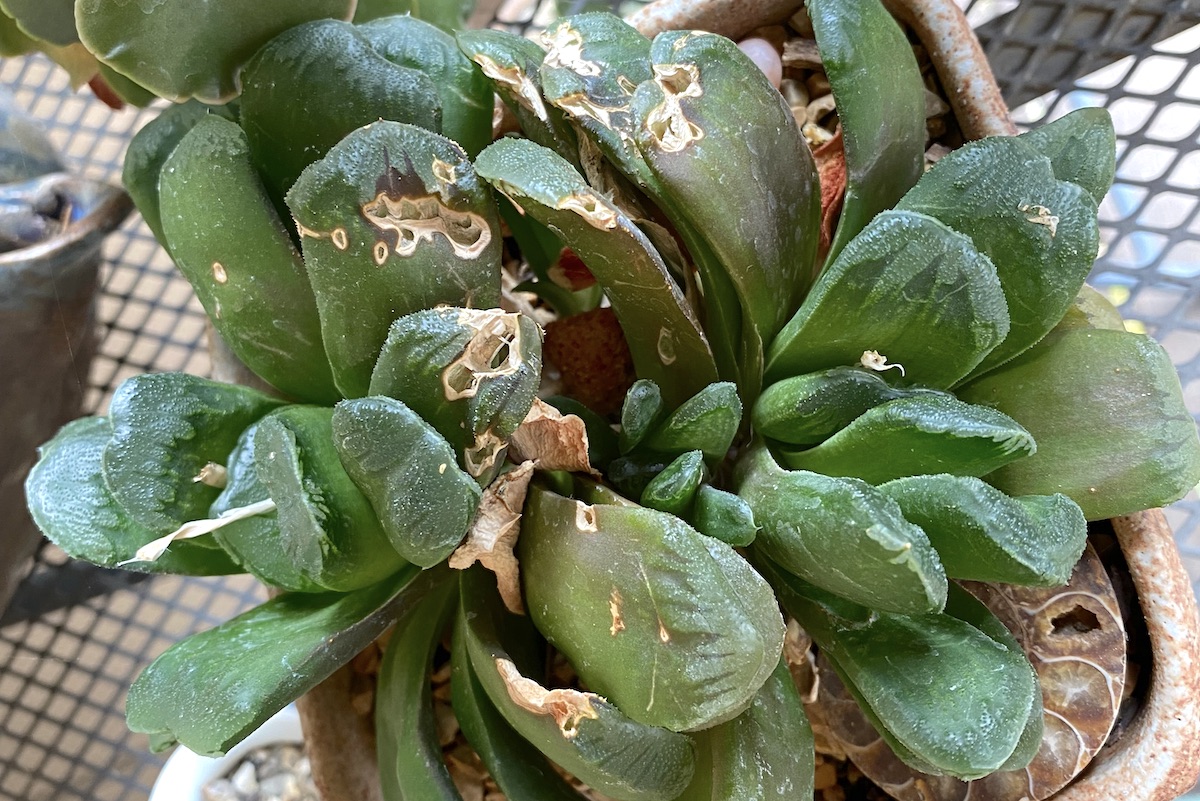

Mealy bugs
- Serious
What looks like bits of white lint in leaf axils are mealy bugs. They won't go away on their own, and can spread rapidly and infest other plants. They lay eggs in tiny cracks and crevices, so even if your plants seem fine, pests may lurk. At the first sign of infestation, spray with Isopropyl 70% (the standard solution).
Mealy bugs on spines (spine mealies)
Not serious but spreads readily
These are a different species than mealies that infest the leaf axils of rosette succulents. Spine mealies infest small, rotund cacti such as mammillarias. The pests look like specks of perlite.
Commercial growers control spine mealies with malathion.
Home gardeners should spray with alcohol and insecticidal soap, isolate the plants, and treat again in two weeks to kill remaining larvae.
Unlike mealies typically found on succulents, when dead, these have to be removed with a toothbrush. Or a blast of water---but only in dry, hot weather, lest the cacti rot.
Mice
- Disfigure the plants
- Not fatal if caught in time
Bitten leaves, especially haworthias and "living stones" succulents (lithops, conophytums, etc.), is likely mouse damage. I don't use bait or traps because they endanger ground-feeding birds. Next best is an ultrasonic rodent repeller.
Also move the plants where mice can't get them---i.e. hanging baskets or other inaccessible locations. Evaluate possible mouse routes to your plants, and trim trees or bushes accordingly.
Mildew and Fungus
- Persistent in damp climates
- Unsightly; can be fatal if not treated
Dry-climate plants like succulents need low humidity and infrequent water. Those from arid (as opposed to tropical) climates tend not to thrive in damp, rainy conditions.
Treat with a mildew spray like those sold for roses or copper fungicide.I used the latter on mangaves shown here, following winter rains. By fall they looked fine after several months of to fresh new growth.
Be vigilant and treat at the first sign of infestation, lest it resurge during seasonally wet weather.
Also see Black Spots, Rust-Like Spots

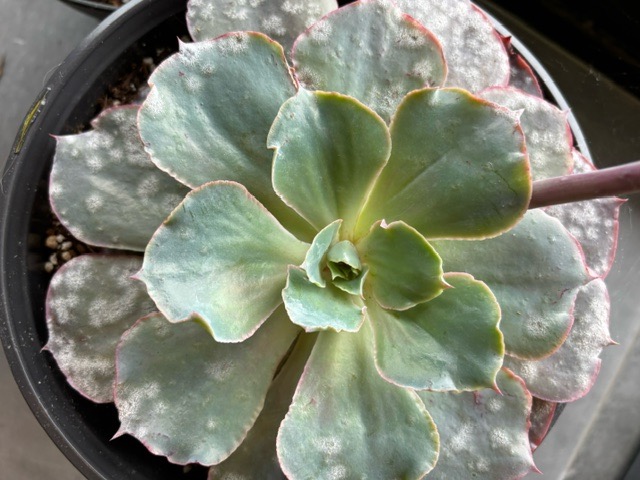


Mildew on red apple
- Serious
- No known cure
First seen during the winter of 2014 in Southern California, entire embankments covered with red apple (Aptenia cordifolia) withered and died, leaving a tangle of dry stems.
Remove them, and when you replant, don't install any kind of ice plant. (The susceptibility of other kinds has yet to be determined.) Go with a nonsucculent instead, such as prostrate acacia shrubs, westringia, ornamental grasses, African daisies, or mat-forming Dymondia margaretae.
Mildew on Echeverias
- Serious
- No known cure
Likely from Korea or China, this white mildew thrives on excessive moisture and rainfall. It favors echeverias and dudleyas, and looks similar to, but is different from, powdery mildew on roses. However, rose fungicide is not considered an effective treatment.
Grow echeverias and dudleyas in pots that can be moved under cover during storms. Water the soil, not the leaves, to keep them dry.
Discard affected plants.
Mycoplasma -- See Above: CrackLed, Scabby patches
Overwatering
- Potentially serious
A split stem, as on this pedilanthus, indicates that the plant took up more water than it could hold. Its shriveled tissues couldn't keep up with the influx, so cell walls broke. The damaged area calloused, leaving a scar, but the rest of the plant is unharmed.
Stem-splitting also can happen to cacti when heavy rains follow prolonged drought.
Other conditions resulting from overwatering include fungus and mildew diseases (leading to rot), stretch marks (notably on cactus pads), and edema.
Pot-Bound (Root-Bound)
- Usually not serious
The Aloe arborescens in the photo seems unaware that its roots are cramped and lack soil. I suspect that it split its nursery pot, then whoever owned it lazily set it, container and all, atop a soil-filled terra-cotta pot, which being topheavy, eventually fell over and broke. This illustrates how succulents will survive despite minimal nourishment from their roots. After all, succulents by definition are able to subsist on moisture stored in their leaves. The fatter and juicier a succulent's leaves, the longer it'll look OK despite being pot-bound or rootless (although its growth may be stunted).

Rabbit and squirrel damage
- Serious
In areas where predators like coyotes are kept out (like gated communities), rabbits and squirrels tend to proliferate. Measures that may help include: Installing an owl box, dusting the plants with crushed red chilis, or spraying a repellent. Also, solar- and battery-powered electronic devices repel small mammals by emitting a high-frequency sound.


Rot
- Serious, often fatal
Mushy tissue at a succulent's core results when its roots sit in water and rot. If the plant has collapsed, or its leaves have fallen off and the core is mushy, it's not salvageable. If there's still some healthy tissue, remove the plant from its pot or garden bed and trim away damaged stems and leaves until you have a clean, unblemished cutting. Replant in fresh soil that drains well. See my videos, The Squish Test for Succulents (3:36) and Why Succulents Rot and How to Prevent It (2:02).
Rust-like spots
- Serious, can be fatal
Endophyllum sempervivi is a fungus similar to the "rust" that affects rose bushes. It's not especially aggressive, but it does spread, and can even be deadly. So if it pops up, don't bother treating it with fungicide. Bag the plant and put it out with the trash. From Europe, the fungus is known to affect sempervivums, aeoniums and echeverias, and potentially other soft-leaved succulents in the Crassulaceae family.

Scale
- Serious
Grayish-white or brown dots that pepper a succulent's skin are scale insects, which latch onto the plant and consume its tissues. The pests' hard outer shell protects them like armor and makes them difficult to get rid of. It's generally best to discard the plant and soil, if potted. Thoroughly clean the area around it, and don't put another plant in that location for six months.
To prevent scale infestation, when potting succulents, add insecticidal granules to the soil.
Give your indoor plants good air circulation and check them often. At the first sign of scale, isolate the plant so it doesn't spread. Scrape off the pest with a plastic knife, wash the leaves with Safer soap, spray with Neem oil, and repot with fresh soil.
If your opuntia (paddle cactus) has fuzzy white dots, scroll up to COCHINEAL SCALE.

Snail damage
- Seldom serious, but unsightly
Snails latch onto leaves and gnaw on them, creating thumb-sized oval holes. Hand-pick the pests and treat the infested area with a biodegradable snail bait that's nontoxic to pets, such as Sluggo.
Plants do eventually outgrow the damage.

Stretch marks on cactus
- Normal
What looks like snail tracks on cactus pads are usually stretch marks. They appear after winter rains in early spring when the plants are growing rapidly.
Stretch marks don't go away and can't be prevented, but on the plus side, they do indicate that the cacti are thriving.

Sunburn
- Seldom fatal, but unsightly
Succulents that haven't been in full sun and that are exposed to it without time to acclimate will sunburn. This shows up as white or brown patches on the leaves. Unless a secondary condition sets in, such as rot, the plants usually recover.
Sunburn is common on newly planted cuttings that have yet to develop roots, and when bright, hot sun follows days of dim light and cloudy skies. Protect vulnerable plants with sheets, palm fronds or other items that provide shade and/or diffuse the sun, such as old window screens or even overturned lawn chairs.
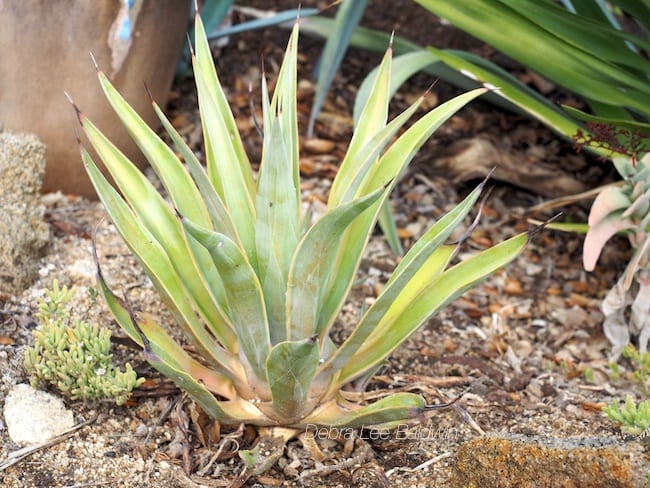


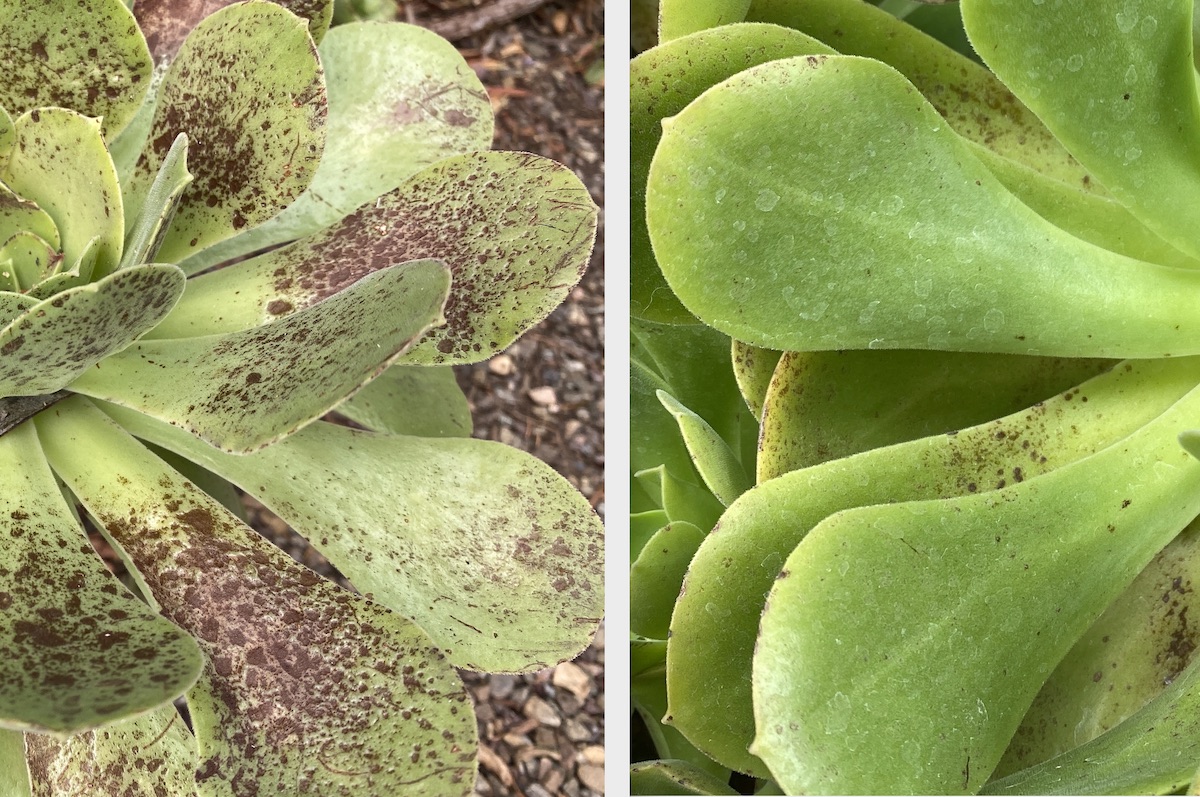
Weak growth
- Preventable
Thin, pale, and spindly leaves can result from undesirable growing conditions: too much sun, too little or too much water, poorly draining or nutrient-deficient soil, too much heat or cold, or pest infestations.
Dig up the plants and re-establish them in amended soil in a better location. If you must leave them where they are, mulch surrounding soil and apply a balanced fertilizer. To prevent water from running off, form a basin around the plant. If too much water is a concern, dig a channel to enhance drainage.
Weeds
- Preventable
Bare dirt+sunlight+water=weeds, so distribute weed preventers on exposed soil.
Spread "pre-emergent herbicide" (several brands, Preen and Miracle-Grow, among others) in late fall or early winter, before annual weeds sprout. It should be watered-in, so right before a rainstorm is ideal. Don't forget to spread under spiky agaves and cacti so you won't have to weed around them come spring.
BurnOut weed killer is made with natural ingredients so it's environmentally friendly. Use it as an alternative to synthetic grass and weed killers. Controls annual broadleaf weeds, perennial broadleaf weeds and grasses.
For chickweed, clover and oxalis (shown here), use both Weed EX pre-emergent and Weed B Gone. To weed cacti, use a stainless steel fish hook remover. Links are affiliate.
White Powder on Leaves
- Normal
Something that really annoys owners of snowy-white succulents is how casual observers can't resist touching them. Don't! Your fingers will remove the leaves' powdery coating, revealing glossy skin beneath. This doesn't hurt the plant but spoils its perfection. Farina (aka pulverulence) does help the plant repel water, and it serves as a sunscreen. I've been told that it'll grow back, but that seems too good to be true. Regardless, do enjoy noticing how white powder frosts the leaves of certain kalanchoes, dudleyas, echeverias and cotyledons---but try to refrain from touching them.
Wind (Impact Damage)
- Normal
- Also see Hail
Most succulents sail through periods of high winds undamaged. Often the worst that happens is a topheavy potted succulent blows over, breaking the pot and spilling the contents.
Aeoniums in particular are vulnerable to impact damage. Wind-driven sand particles will pit the leaves, resulting in brown dots. If your aeoniums show this but winds haven't been strong, a gardener may have blasted them with a leaf blower---especially if the plants are low to the ground, near a pathway.
Not finding what you need? Go to...
Succulent Pests and Problems Q&A Forum
Are pests or mysterious maladies causing problems with your succulents? This page is a forum for you to ask questions, leave comments and share what works for you. Others can see and benefit from the answers. Your own tried-and-true solutions are welcome, too!
How to Deal with Mealy Bugs on Succulents
If you grow succulents, sooner or later you’ll deal with mealy bugs. For newbies, mealies often come as a surprise. Suddenly the plants are dotted and webbed with what looks like lint. Veterans are more vigilant. We check for
Agave Snout Weevil Prevention and Treatment
Agave snout-nosed weevil is a half-inch-long black beetle with a downward-curving proboscis that enables it to pierce an agave’s core, where it lays its eggs. Grubs hatch, consume the agave’s heart, then burrow into the soil to pupate.
Ants in Your Succulents? What to Do
Late summer into fall, Argentine ants like to nest in the root balls of potted plants. Haworthias, aloes (especially dwarf varieties), gasterias and gasteraloes are highly vulnerable. Ants overwinter in the soil and consume the plant’s juicy core. Leaves eventually fall off and the plant dies. The first line of defense is to create a barrier around your pots using ant…
Cochineal Scale on Paddle Cactus, What To Do
White fuzzy lumps on paddle cactus are cochineal (coach-en-ee-al) scale, a parasite that pierces the plant’s skin and consumes its juices. It’s used to make carmine dye.
Frost and Succulents: What You Need to Know
Depending on how long temps stay below freezing (32 degrees F), “frost tender” succulents may show varying degrees of damage. When moisture in the cells of a vulnerable plant freezes, it expands, bursts cell walls, and turns leaves to mush. In a “light frost,” leaf tips alone may show damage (“frost burn”). In a “hard frost,” temps stay…
How to Manage Aloe Mite
They seem everywhere in spring: mite-damaged aloes ranging from dwarf cultivars to tree ‘Hercules’. The microscopic pests (Eriophyes aloines) are not insects but spider relatives. They cause deformed flowers, a bubbly fringe on leaf edges, and orange-and-green growths where leaves meet stems. Google “aloe mite treatment,” “aloe mite prevention,” “aloe gall” or “aloe cancer,” and you’ll discover that distinguished experts, landscape designers, succulent societies…


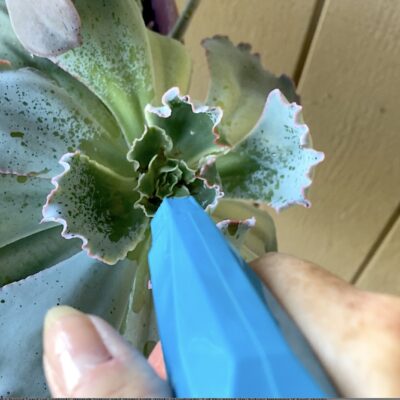



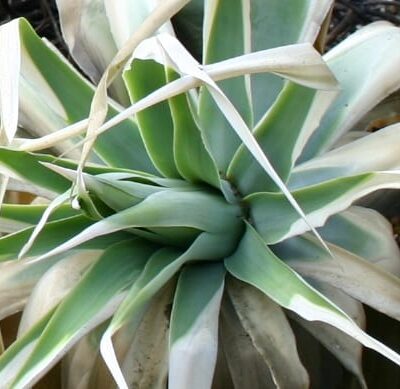

When potting echeverias and other susceptible succulents, add insectical granules to the soil.